Aerospace
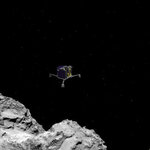
Rosetta mission: A giant leap for humans and robots. Huart, ESA
By Natalie Starkey, The Open University
With only a week to go before the Rosetta spacecraft drops its Philae lander onto the surface of comet 67P, I wonder whether there will be another space mission in my lifetime that is so inspiring.
Part of what has been so impressive is the length of time this mission has taken to finally get to the comet – 20 years since planning began (when I was still in high school), ten years since launch (when I was studying for my first degree). I feel very lucky that I am now employed as a space…

Curiosity rover has its own selfies snapped on Mars, ESA’s Rosetta probe photographs itself with a comet on the background, so it’s high time for the six-person Space Station crew to take an orbital self-shot, doesn’t it? In the newest "space selfie", expedition 41 astronauts smile for the camera and the three of them are dressed in spacesuits as a reminder of their preps for a returning trip to Earth on Sunday. “The International Space Station Expedition 41 crew. My favourite selfie in space!” German astronaut Alexander Gerst commented on the picture.
Gerst’s favorite is on of many…
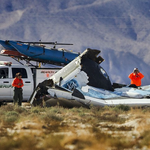
The explosion of Virgin Galactic’s SpaceShipTwo is stirring up mixed emotions as scientists, astronauts, space agency officials and others involved in the industry worldwide, express their sadness and comment on what happened over the Mojave Desert. “On behalf of the entire NASA family, I offer our deepest condolences to the family and loved ones of the pilot lost in today’s accident involving Virgin Galactic’s SpaceShipTwo, and we are praying for a speedy recovery of the other pilot," NASA Administrator Charles Bolden said on Friday. "Space flight is incredibly difficult, and we commend…
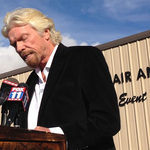
Virgin Group founder Richard Branson, after arriving at the SpaceShipTwo in Mojave Desert, California on Saturday, acknowledged that his dream of commercial space tourism may have ended in the explosion that consumed Virgin Galactic’s test craft, but the company will learn from the mistakes and continue its mission to send people into space. "This team is a group of the bravest, brightest, most determined and most resilient people I have ever had the privilege of knowing," he told reporters at a press conference. "We are determined to honour the bravery of the pilots and teams here by…
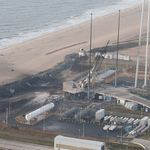
NASA’s Wallops Incident Response Team has completed an initial assessment of Wallops Island, Virginia, following the explosion of Orbital’s Antares rocket shortly after liftoff at 6:22 p.m. EDT Tuesday, Oct. 28, from Pad 0A of the Mid-Atlantic Regional Spaceport at Wallops Flight Facility in Virginia. The overall findings indicate the major elements of the launch complex infrastructure, such as the pad and fuel tanks, avoided serious damage, although some repairs will be necessary. It also appears that a significant amount of debris remains on the site. “After up close visual inspections by…
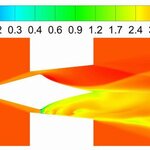
Aircraft propelled by beams of light rather than fuel? Laser-propulsion just got a step closer thanks to a new method for improving the thrust systems developed by physicists Yuri Rezunkov of the Institute of Optoelectronic Instrument Engineering and Alexander Schmidt of the Ioffe Physical Technical Institute in Saint Petersburg.
Currently, the maximum speed of a spacecraft is limited by the amount of solid or liquid fuel that it can carry. Achieving higher speeds means that more fuel must be burned—fuel that, inconveniently, has to be carried by the craft and hefted into space. These…
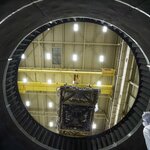
Though it has been in the works since 1996 and long passed both its original 2011 completion date and even the most aggressive budget estimate, the James Webb Space Telescope has a milestone that may get people excited: after 116 days of extremely frigid temperatures like that in space, the heart of the James Webb Space Telescope, the Integrated Science Instrument Module (ISIM) and its sensitive instruments, emerged unscathed from the thermal vacuum chamber at NASA's Goddard Space Flight Center in Greenbelt, Maryland.
Engineer Mike Drury, the ISIM Lead Integration and Test Engineer…

No one is going into deep space any time soon, the modern political climate is such that it will now be common for one president to cancel his predecessor's program. As President Obama did to Bush, someone in 2017 is likely to do to President Obama.
Yet officially, the NASA that the president said could not even go back to the moon on time and on budget is hoping it will go to Mars, and in preparation for that people are trying to understand and characterize the radiation hazards astronauts could face., concludes a new paper by University of New Hampshire scientists.
In a Space Weather…

The Hubble Space Telescope has uncovered three Kuiper Belt objects that the New Horizons spacecraft could potentially visit after doing a fly-by of Pluto in July 2015.
The Kuiper Belt is a vast rim of primordial debris encircling our solar system. KBOs belong to a unique class of solar system objects that has never been visited by spacecraft and which contain clues to the origin of our solar system.
The
Kuiper Belt objects
are each about 10 times larger than typical comets, 1 to 2 percent of the size of Pluto. Unlike asteroids,
Kuiper Belt objects
have not been heated by the sun and are…
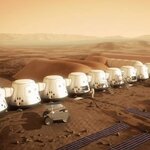
The Dutch have always been bold. Not just any culture would make wooden shoes a thing and turn tulip bulbs into a luxury investment. And if you like New York City, you can thank New Amsterdam.
Now Holland wants to be a colonial power again, this time on Mars. The "Mars One" project, announced in 2012, wants to establish the first human colony on the Red Planet by 2025. It's a one-way trip but there is no shortage of people willing to be one of the four that will build the first human settlement in space.
Mars One claims that the entire mission can be built upon technologies that…